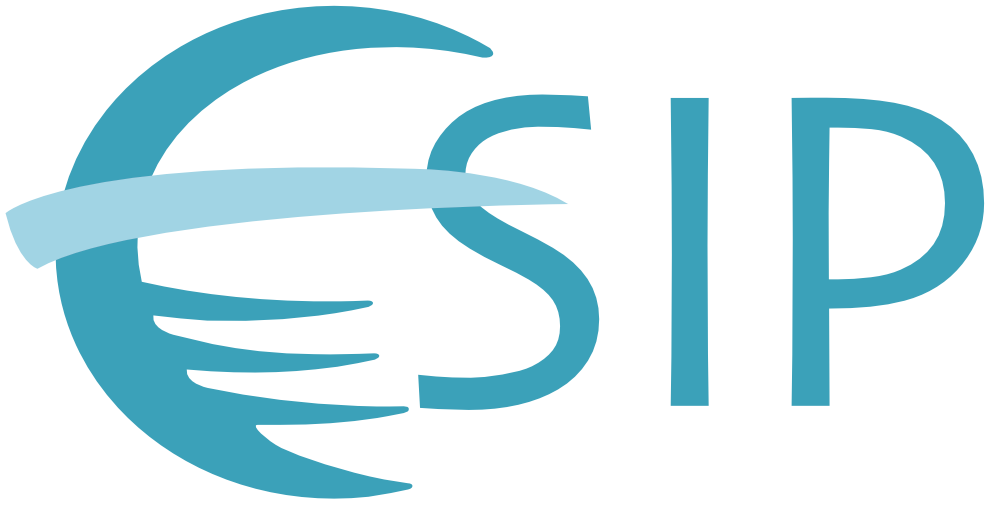Innovation to Impact. See you at the July ESIP Meeting.
Guest Blog: Earth Science Data Should Relate Science to Society

Jonathan Blythe works as a data manager at the Bureau of Ocean Energy Management and leads the Discovery Cluster. In his guest blog, he shares what Indigenous data practices can teach us about relationality of Earth science data to society.
Here at the Earth Science Information Partners (ESIP), we talk a lot about Earth science data, and the promising practices and norms that we use to pursue our work as Earth science data practitioners.
When I attended a learning session at 2024 AGU meeting in Washington D.C. called: “Introduction to Ethical Space,” I was struck by how one of the instructors, Darryl Reano, spoke about Indigenous data. He explained that Indigenous data is holistic and captures Indigenous conceptions of the human experience and relationality to nature. This is not a belief system or abstract concept; relationality forms the norms of how people live day to day.
Societal norms help us know how to act when in nature. For example, school children learn that littering is bad for the environment. In youth programs the teaching goes a bit further, with the outdoor code and the leave no trace principles. Smokey Bear is a pop culture icon created as part of a public service campaign to educate Americans of all ages about their role in preventing forest fires. The collective benefit that Western society achieves through these norms is not unlike what Daryl was teaching us about Indigenous data.
What is holistic data?
Indigenous data imparts knowledge of how to live in harmony with lands, waters and resources. For example, Indigenous data can include stories that are passed down through oral traditions to reflect the lived experience of tribal cultures over millennia. Indigenous protocols are prescriptive and tell us how to act with respect to this whole. Earth science data can be tagged with Indigenous protocols (https://localcontexts.org/) so we become aware of how they fit into this societal context. However, few other Earth science data management practices are focused on incorporating relationality, reciprocity and responsibility of the data to norms in society and culture.
Earth science data are much more atomic than Indigenous data. They represent the parameter values that Earth scientists measure and model. Sometimes, Earth science data relate the original purpose for data collection. For example, in the ocean sciences we tag data with the Data Categories for Marine Planning (USGS Open-File Report 2015–1046; https://doi.org/10.3133/ofr20151046) to relate data to their intended uses. ESIP has promoted the practice of data citation (ESIP 2019) to establish relationality of data to scholarly practice. Data citation is gaining traction with the American Geophysical Union and other purveyors of scholarly publications. However, holistic data means that Earth science data somehow relate to societal norms, but citation metrics at best only recognize authorship of data.
Holistic data for the Earth sciences
Earth sciences could use a vocabulary to express relationality of data to society. The following list of terms cover different kinds of scholarly literature contributions:
- Research Methodology
- Scientific Discovery
- Invention
- Evidence Building
- Aggregation Process
- Engagement
Some of this terminology may be new, so I’ve defined each term below:
Research Methodology is a contribution that is cited because the authors are referencing or using a research methodology that was developed and described in a citable format. A good example of research methodology citation is when an author uses processed satellite data – the author needs to cite the processing methodology used to create the source data set so he/she can precisely use the data and properly interpret the outcome of their analysis. There are many other examples of research methodology citation. In fact some scholarly works are defined as “methods” papers, so it may be fair to classify any citation of this kind of scholarly work as a research methodology citation.
Scientific Discovery is a contribution that is cited because it is the first mention of a natural or social phenomenon in the primary literature of some importance. This could be a new biological species or a new biological habitat, such as the 1970s discovery of deep-sea hydrothermal vents. Recently, scientists discovered broad swaths of previously unknown ancient deep-sea coral habitat along the U.S. Atlantic Coast. Discovery can also be conceptual or theoretical if a scholarly work contributes an idea or a mathematical equation, and citing this contribution engenders significance to the contribution and shared understanding or departure from the concept or theory in the citing work.
Invention is a contribution that establishes an innovative new tool or system, or any part therein. Inventions are often patented, because patents protect intellectual property and give inventors exclusive rights to sell their inventions for financial reward. However, patents also cite to previous patents and other mentions of technology from the science and engineering literature, because inventors have to demonstrate how their innovations depart from previous inventions to establish what is particularly new about their invention. This scholarly practice also happens to give credit to other inventors, yet this is not currently a basis to reward inventors for their contributions.
Evidence Building is a broad term that is defined in title 1 of the Evidence Act, which describes any activities of federal agencies to “use the best available data and scientific evidence to make empirically supported decisions.” (OPM, accessed 2024). Here, data have a specific policy relevance, and while evidence is a term reserved for statistical data, evidence building is a much broader term used to capture any other data that contextualize evidence for federal decision making. This includes aspects like broader impact and societal relevance that is a required aspect of all scientific communication and proposals today. Pretty much all Earth science research has a tie into broader impacts of some sort, and scholarly works typically have at least one or two citations to this effect.
Aggregation Process is the contribution of scientific information that translated or otherwise is applied from primary sources to support an aggregation process, such as contributing data to a regulatory activity of a government agency. Aggregation processes have specific data standards, and translating data from a primary source into the data standard is a contribution that itself deserves recognition. This includes processes that may convert data from a variety of sensors, instruments or other primary sources. Air quality data to support EPA’s Air Quality Standards are a great example of this. Sensor networks like Purple Air (https://map.purpleair.com/) lower the cost for local communities to collect and contribute air quality data in a manner that complements state and federal air quality monitoring.
Engagement is a contribution Earth scientists make when they teach or otherwise communicate science in a framework where the purpose and outcomes are transparent and accepted by the intended audience. This includes teaching science in a structured classroom environment. In this learner-focused process, science is communicated in terms that are important to students and their education. This contribution can be tracked in terms of student projects that use Earth science data or citizen science data collected or processed by students as part of the structured engagement activity. The engagement transfers to the learner the agency of Earth science practice and what it means to be a scientist. Often these metrics are tracked to better understand the efficacy of the engagement activities and the number of learning opportunities that were realized.
A call for relationality in Earth science data
In conclusion, though the data management tools that we have are relatively limited, relationality is already present in the Earth sciences in numerous ways.
The societal challenges that Earth scientists address are too important to privilege this information to only “those in the know.” Current Earth science data management best practices are carefully engineered, but they form structured information that is too rigid and siloed such that it is fragile and susceptible to deletion.
We need tools to disseminate Earth science across an Ethical Space where different world views interface. These tools could describe how Earth science data contributes to the scientific literature, and this adaptation of Earth science information systems could help this information become more resilient to societal change.
This will build a bridge to other knowledge systems, like Indigenous knowledge, and the lessons we learn from this exercise may help us along the much longer journey to show how Earth science data relates to societal challenges.
ESIP Data Preservation and Stewardship Committee (2019). Data Citation Guidelines for Earth Science Data, Version 2. ESIP. Online resource. https://doi.org/10.6084/m9.figshare.8441816.v1
Rattling Leaf J, Bridge G, Reano D. 2024. Introduction to Ethical Space, Indigenous Knowledges, Indigenous Science, and Reconciliation for Earth and Space Scientists. Presented at: What’s Next for Science. AGU 2024; 2024 Dec 9-13; Washington D.C. URL: https://agu.confex.com/agu/agu24/meetingapp.cgi/Session/228280
US Office of Personnel Management. 2024. Evidence-Building. https://www.opm.gov/about-us/reports-publications/agency-plans/strategic-plan/evidence-building/ Accessed December 2024.
This blog was written by Jonathan Blythe from BOEM and with edits from Allison Mills from ESIP.
Thank you to Hillary Renick and Rodney Cluck for feedback on an earlier draft of this blog. The views expressed in the blog are solely those of the author and do not necessarily represent the official views of the Bureau of Ocean Energy Management.
ESIP (Earth Science Information Partners) is a community dedicated to addressing environmental data challenges. Learn more at esipfed.org and sign up for the weekly ESIP Update for Earth Science data events, funding opportunities, and webinars.




